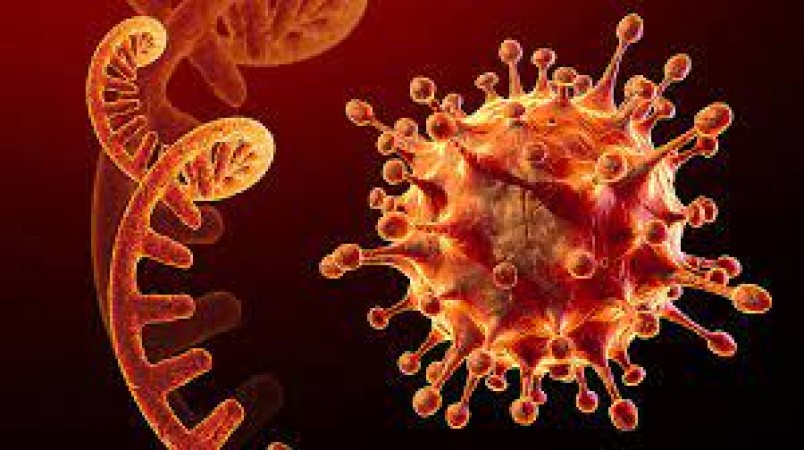
In the intricate world of molecular biology, RNA (Ribonucleic Acid) stands as a crucial player in the cell's functioning. Often overshadowed by its more famous cousin, DNA (Deoxyribonucleic Acid), RNA plays a fundamental role in the translation of genetic information into proteins and regulation of gene expression. This article delves into the world of RNA, exploring its structure, functions, and the significant impact it has in various biological processes.
What is RNA?
RNA is a type of nucleic acid present in all living organisms, from bacteria to humans. It plays a vital role in decoding and transferring genetic instructions necessary for the synthesis of proteins, making it essential for life's very existence.
Structure of RNA:
RNA is a single-stranded molecule, unlike DNA, which forms a double helix. It is composed of nucleotides, each containing a sugar (ribose), a phosphate group, and one of four nitrogenous bases: adenine (A), uracil (U), cytosine (C), and guanine (G).
Types of RNA:
There are three main types of RNA in cells:
Messenger RNA (mRNA): Carries genetic information from DNA to the ribosomes for protein synthesis.
Transfer RNA (tRNA): Transfers amino acids to the ribosomes during protein synthesis.
Ribosomal RNA (rRNA): Forms a part of the ribosomes, where protein synthesis occurs.
Functions of RNA:
Protein Synthesis (Translation):
The process of protein synthesis involves translating the genetic information encoded in mRNA into a specific sequence of amino acids, ultimately forming a functional protein.
Gene Expression:
RNA plays a key role in regulating gene expression by controlling the amount of protein produced. Various factors influence the transcription of DNA into RNA and the stability of RNA molecules.
Regulation of Gene Expression:
MicroRNAs and small interfering RNAs are involved in gene regulation. They can bind to specific mRNA molecules and either promote their degradation or prevent their translation into proteins.
RNA and DNA comparison:
While RNA and DNA share similarities, they also exhibit significant differences:
Differences in Structure:
DNA is a double-stranded helix, whereas RNA is single-stranded. Additionally, RNA uses uracil (U) as one of its bases instead of thymine (T) found in DNA.
Roles in Cellular Processes:
DNA serves as the repository of genetic information, while RNA is involved in transmitting and expressing that information.
RNA Interference (RNAi):
RNA interference is a biological process that regulates gene expression through the degradation of specific mRNA molecules. It is a powerful tool in gene silencing and has various applications in research and medicine.
The Role of RNA in Viruses:
RNA is a critical component of some viruses, leading to two main categories:
RNA Viruses:
These viruses have RNA as their genetic material, making them unique in the viral world.
Retroviruses and Reverse Transcription:
Retroviruses, like HIV, convert their RNA into DNA through the process of reverse transcription, which is catalyzed by the enzyme reverse transcriptase.
RNA-based Therapies:
Advancements in RNA research have opened new doors for therapeutic applications:
RNA Vaccines:
RNA vaccines, such as those used against infectious diseases like COVID-19, deliver genetic instructions to cells, promoting an immune response against specific pathogens.
RNA-targeted Drugs:
Researchers are exploring RNA-targeted drugs that can silence specific genes involved in diseases like cancer.
RNA Sequencing (RNA-Seq):
RNA-Seq is a powerful tool used to study gene expression patterns and discover novel RNA molecules in various biological samples.
RNA and Human Diseases:
RNA has been implicated in numerous human diseases, including cancer, neurodegenerative disorders, and viral infections. Understanding its role in these conditions provides potential therapeutic avenues.
Future Prospects of RNA Research:
As our understanding of RNA deepens, so does the potential for groundbreaking discoveries. RNA research holds promise for addressing numerous health challenges and reshaping the landscape of medicine. RNA is an indispensable molecule that orchestrates the flow of genetic information within cells. From its role in protein synthesis to its potential applications in therapeutics, RNA continues to captivate scientists and medical researchers alike. As we unlock its mysteries, the opportunities to improve human health and wellbeing seem boundless.
DNA: The Code of Life and its Implications for Humanity
Lucid to set afloat its new Gravity SUV by 2024 with no hiatus
How to Bake Perfect Chocolate Chip Cookies: A Step-by-Step Guide